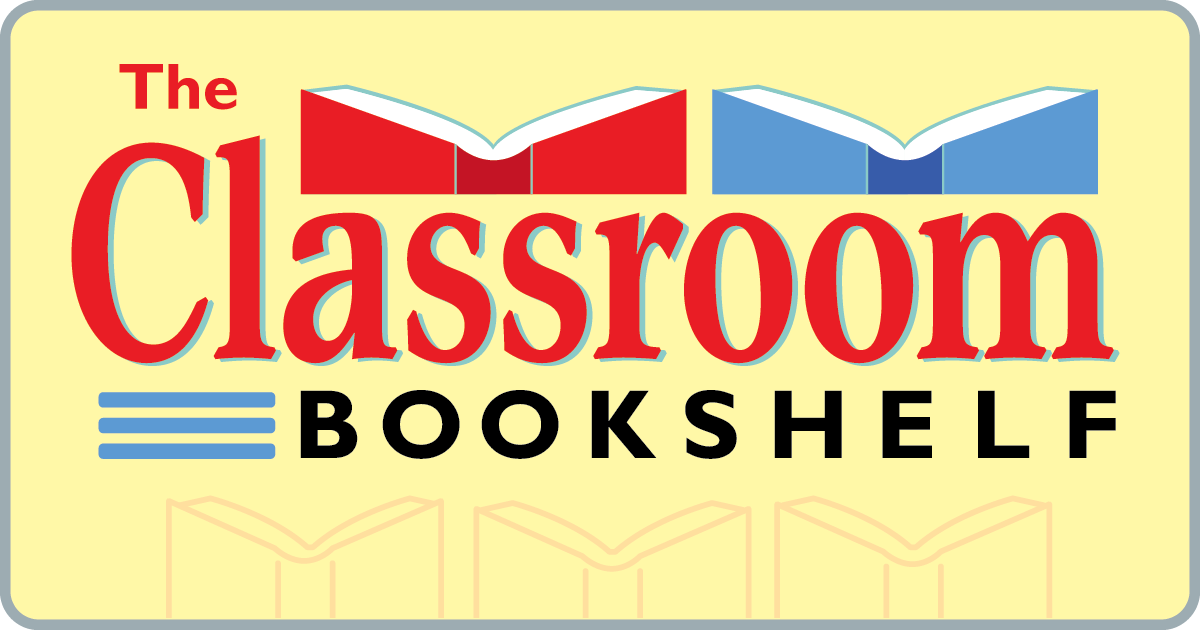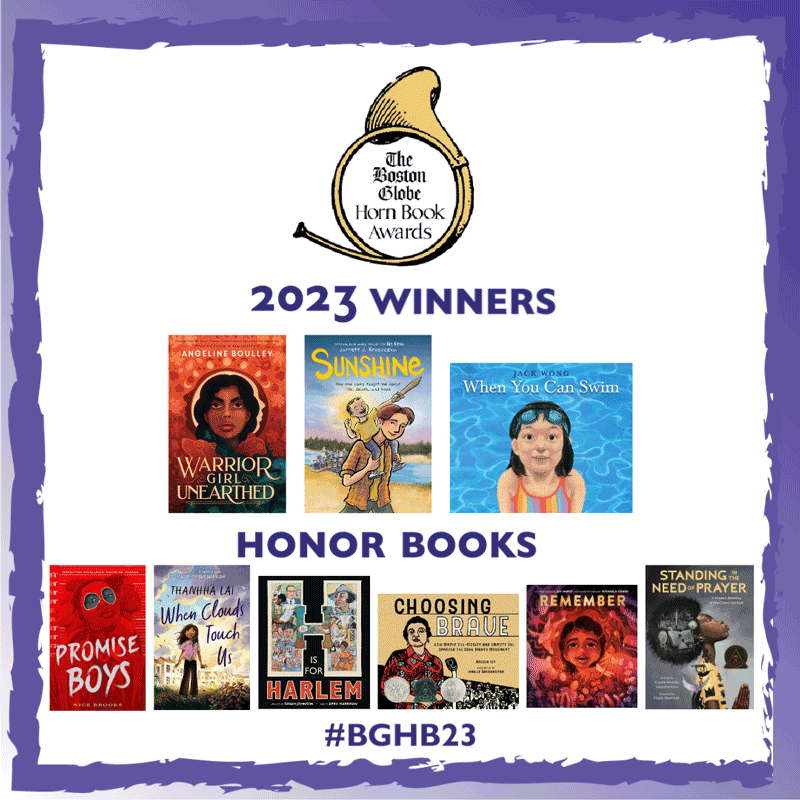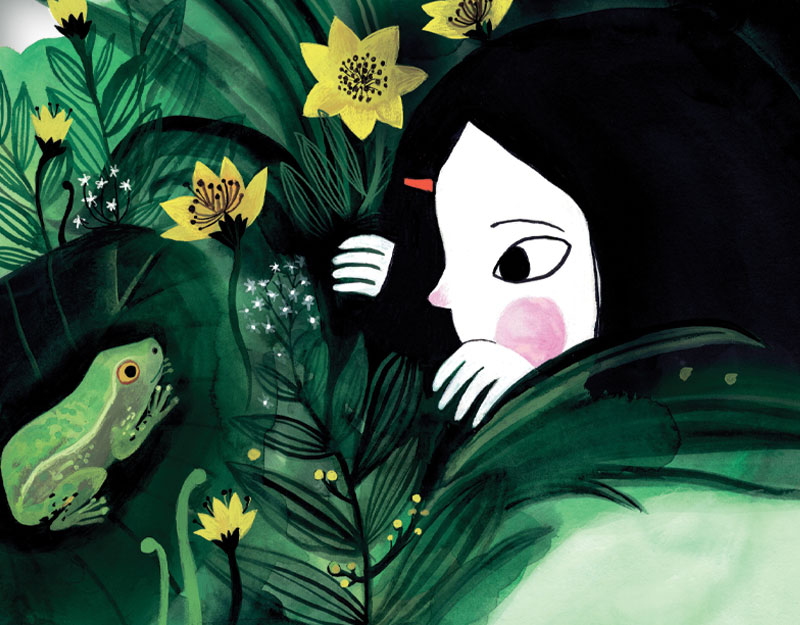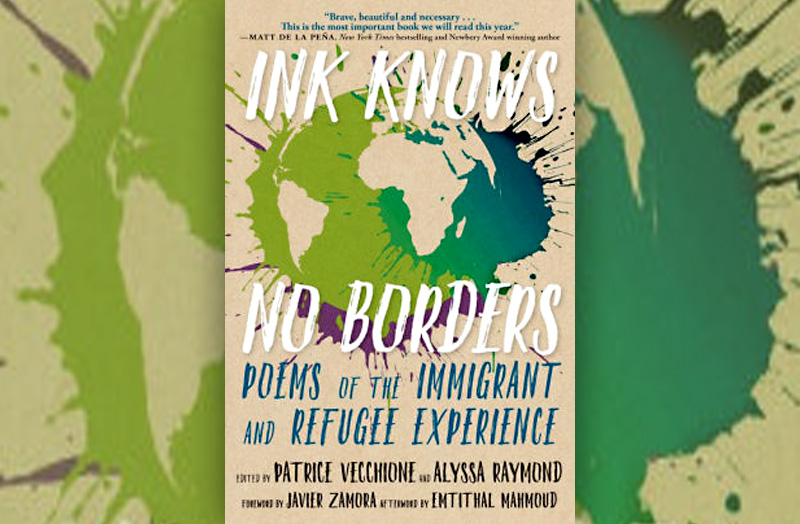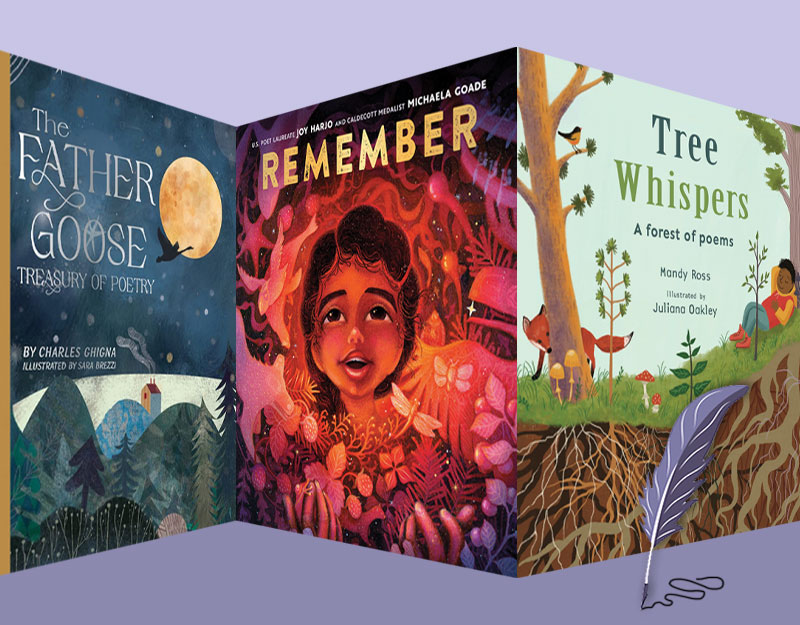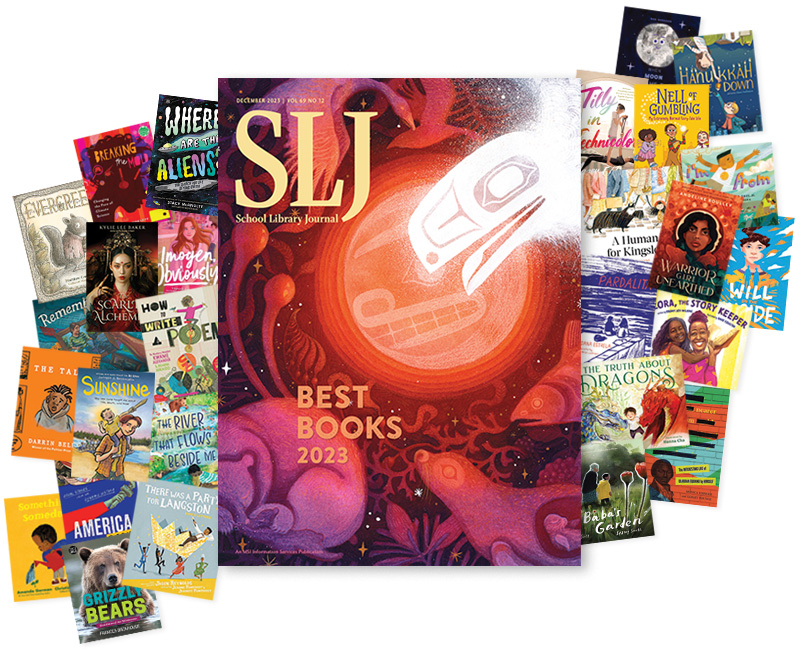Out of Wonder
Written by Kwame Alexander, with Chris Colderly and Marjory Wentworth
Illustrated by Ekua Holmes
Published by Candlewick Press
ISBN: 978-0-7636-8094-7
Grades 3-8
Book Review
“A poem is a small but powerful thing. It has the power to reach inside of you, to ignite something in you, and to change you in ways you never imagined. There is a feeling of connection and communion — with the author and the subject — when we read a poem that articulates our deepest feelings.” The world could use more of the connection and communion that Newbery Award-winning author Kwame Alexander identifies in the Preface to Out of Wonder, a collection of poems written in homage to poets whose work Alexander and co-authors Chris Colderly and Marjory Wentworth are “passionately in love with.” Organized into four sections (“Got Style?”, “In Your Shoes,” “Thank You,” and “About the Poets Being Celebrated”), the collection celebrates poets from the early modern period (Basho, Rumi) to the present day (Giovanni, Oliver, Nye), giving young readers just enough of a taste of the poet’s style and substance to encourage them to find out more, and try their own hand at writing. Ekua Holmes’s collage illustrations electrify the collection, creating an energy that honors the diversity of poets and poems and unifies the distinct voices into a coherent whole. Poetry can give even our most reluctant writers a vehicle for sharing their stories and their voices. Out of Wonder gives you and your students a pathway into your own poetry workshop.
Teaching Ideas and Invitations
Preview: Table of Contents. Before reading any poems, share the Table of Contents with your students. How is the book organized? Why is the collection organized in this way? How might the authors want you to read these poems? What should they be thinking about as they consider each section? Next, play the NPR interview with Kwame Alexander for your students. What else should they consider as they make their way through the collection? What questions should they ask themselves?
ADVERTISEMENT
ADVERTISEMENT
Preview: Introduction to Poetry. Before reading Out of Wonder, read aloud “Introduction to Poetry” by Billy Collins. Use the poem as a starting point for group norms about how you will talk about poetry in your class. Why do people write poems? Why do they read them? What role does poetry have “in the real world?” What role does poetry have in school? What is Collins trying to say in his poem? What do your students want you to know about their own previous experiences reading and writing poetry? What do you want your students to know about your previous experiences reading, writing, and teaching poetry?
Who is the Poet, Really? After reading each poem aloud as a class or in small groups, have students do a quick write or a quick draw to mull over the ways that the poem speaks (or fails to speak) to them. Have them share their responses, and compare and contrast their reactions. Based on their range of reactions to the poem, have them consider the poet being “celebrated” by the poem. What is/was s/he like? What can they infer about the poet’s style? What themes can they predict might be in his/her poetry? Using the resources below as well as collections in your school and local library, share some poems by the poet, and have students see what they recognize based on what they inferred and predicted.
Mentor Poets, Poet to Poet. Once you have completed the collection, have students identify their favorite poem. Place students in writing pairs, trios, or groups based on their poet of choice. Have the students discuss what made the poem their favorite. Next, have read through other poems written by the poet. What do they notice about the topics s/he writes about, the style that s/he uses? Have students write original poems, modelled on the poet’s work, just like those published in Out of Wonder. It might make sense to do this first as a whole class with one of the poets, or a poet outside of this collection. As part of that work, share the Poet to Poet Project of the Academy of American Poets. Be sure to share samples of the student writing modelled on their favorite poems from the selections, as mentor texts for your students.
Poetry of Place. Many poets are famous for writing about a particular place, such as Mary Oliver’s beloved Cape Cod, the Harlem of Langston Hughes’s work, Wendell Berry’s Kentucky, or the Middle East of Naomi Shihab Nye’s poetry. Read some of these poets’ poems to your students and consider the role that place has within them. Next, think about what is or what might be the poetry of your place? Invite a local poet in to talk about his or her work. To find a local poet, see the National Federal of State Poetry Societies list. If your state isn’t a part of the federation, seek out assistance from your school or public librarian, or local bookstore owner. Have your students consider their favorite places. Close to home? Far away? A former home far away? Have students brainstorm some of their favorite placesl: their room, the front stoop, the swing in the corner of the playground, the balcony of their grandparents’ apartment. Next, go for a walk around the neighborhood in which your school is set, or the school property itself if you are in a more rural area. Have students do some freewriting along the way. Have them do the same at home, and then come to school ready to revise one of the free writes into a poem about a place. This step-by-step guide on place-based poetry from the National Writing Project might help. Publish students’ work in a class anthology, complete with photographs or artwork depicting their favorite places.
ADVERTISEMENT
ADVERTISEMENT
Exploring Anthologies. Working with your school or local librarian, gather other picture book poetry collections/anthologies for young people. The curated collections by Lee Bennett Hopkins may be particularly useful for classroom exploration. After reading Out of Wonder, place students in pairs in order to read a second poetry collection. What topic or theme holds the collection together? Why might the poems in the collection be placed in the order that it was? Who wrote the poems? Where do they come from? Have students explore some of the poets in the collection using some of the digital resource below. Have each pair move into a small group to compare and contrast their collections with one another. How are they similar? How are they different? How do they compare to Out of Wonder?
Illustrating Anthologies. Create an illustrated class anthology, using Out of Wonder as a mentor text for curation. Allow students to choose a favorite poem that they have written. Have them share their poem with members of a small group (perhaps you are using writing groups throughout a poetry genre study) and identify the similarities and differences between the poems. Have them group create a few hashtags that could be used for each poem, and share them with the class. Once each group has shared their hashtags, compare and contrast their similarities and differences. How can the hashtags help students to group poems in different ways? Guide students towards creating a Table of Contents for the anthology that reflects logical groupings of poems based on content, style, or theme as revealed in the hashtags. Publish the anthology in print, digitally, or both. If you have a class Twitter handle, tweet out the poems using the student-generated hashtags. Make sure to host a poetry reading at your school, local library, local bookstore, or senior citizen center, so that students can share their poetry with the community.
Poetry in Motion. Fill the hallways of your school with poetry! Perhaps you live in a city that is part of the Poetry in Motion project. Perhaps you don’t. Have students search the database to read different poems that have been featured in different cities. To help students understand the project, particularly those in more suburban and rural areas, play this short video of Billy Collins reading his poem “Grand Central Station.” The video shows the train station while he reads the poem, and then concludes with a picture of the Poetry in Motion poster of the poem. Once students have a sense of the project, have them create their own Poetry in Motion posters, using either their favorite published poems, or their favorite original poems. Line the hallways of your school with them. Line the hallways of your town or city hall or local library, too!
A Poem a Day: Reading Poetry Aloud. During poetry month and throughout the school year, share poems aloud with your students, and have them do the same. Spend some time at the end of each month selecting poetry collections with your school or local public librarian. You can have all of your students browse the collections at the end of the month or have five or six students do so each Friday. Have each student put a sticky note on the poem that s/he would like to read aloud. Make a copy of each poem for each child so that they can practice. Then, at morning meeting, right after homeroom if you teach at the middle level, or at the end of the day, have a single student read aloud or recite his/her selected poem.
Further Explorations
Digital Resources
Kwame Alexander Official Website
Ekua Holmes Official Website
Marjory Wentworth Official Website
http://www.marjorywentworth.net/
“’Out Of Wonder’ Aims To Inspire A New Generation Of Poets, “ NPR http://www.npr.org/2017/03/17/520421503/out-of-wonder-aims-to-inspire-a-new-generation-of-poets
NCTE Award for Excellence in Poetry
http://www.ncte.org/awards/poetry
National Poetry Month Resources, Reading Rockets
http://www.readingrockets.org/calendar/poetry
Academy of American Poets
“Teach this Poem,” Academy of American Poets
https://www.poets.org/poetsorg/teach-poem
“Read this Poem,” Academy of American Poets
https://www.poets.org/poetsorg/read-poem
“Poems Kids Like,” Academy of American Poets
https://www.poets.org/poetsorg/text/poems-kids
“Reading Poetry with English Language Learners,” Reading Rockets
http://www.readingrockets.org/article/reading-poetry-english-language-learners
Children’s Poetry, The Poetry Foundation
https://www.poetryfoundation.org/resources/children
Lee Bennett Hopkins
http://www.leebennetthopkins.com/
Poetry Book Entries from the Classroom Bookshelf
https://www.theclassroombookshelf.com/category/poetry/poetry-picture-books/
Filed under: Poetry, Poetry Picture Books
About Mary Ann Cappiello
Mary Ann is a professor of language and literacy at Lesley University. A former public school language arts and humanities teacher, she is a passionate advocate for and commentator on children’s books. Mary Ann is the co-author of Teaching with Text Sets (2013) and Teaching to Complexity (2015) and Text Sets in Action: Pathways Through Content Area Literacy (Stenhouse, 2021). She has been a guest on public radio and a consultant to public television. From 2015-2018, Mary Ann was a member of the National Council of Teachers of English's Orbis Pictus Award for Outstanding Nonfiction (K-8) Committee, serving two years as chair.
ADVERTISEMENT
ADVERTISEMENT
SLJ Blog Network
The Moral Dilemma of THE MONSTER AT THE END OF THIS BOOK
Cover Reveal and Q&A: The One and Only Googoosh with Azadeh Westergaard
K is in Trouble | Review
Fighting Public School Book Bans with the Civil Rights Act
ADVERTISEMENT

